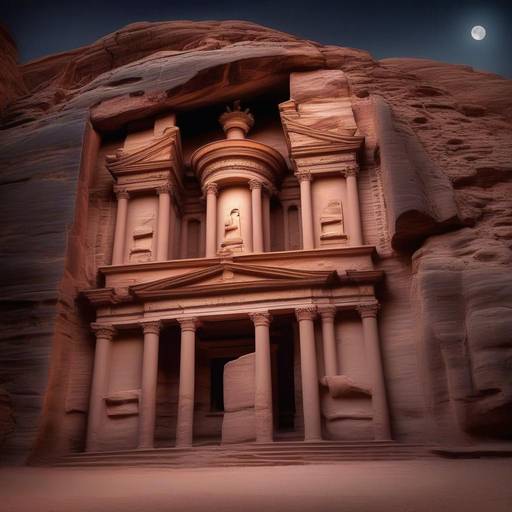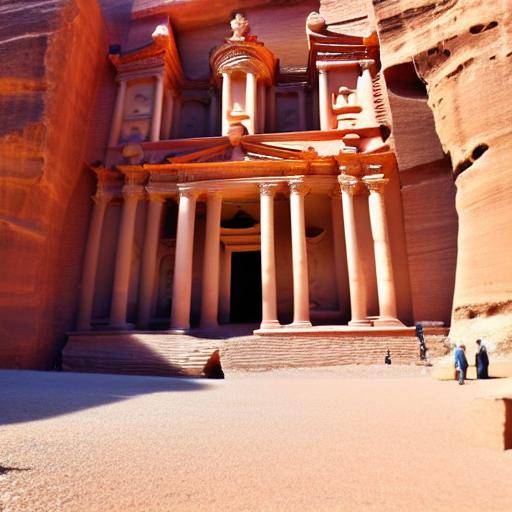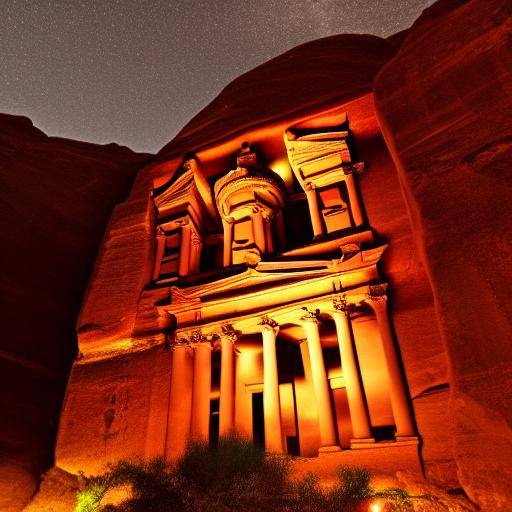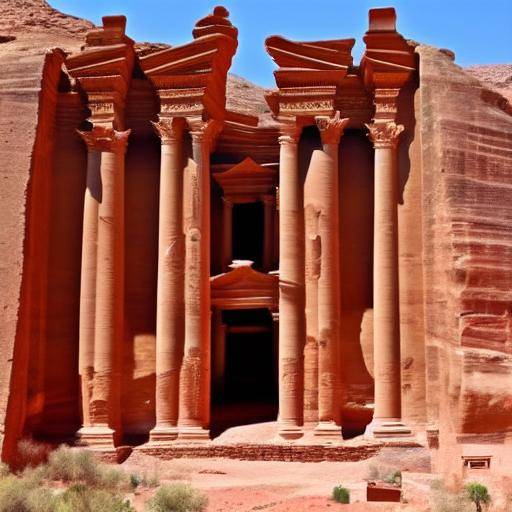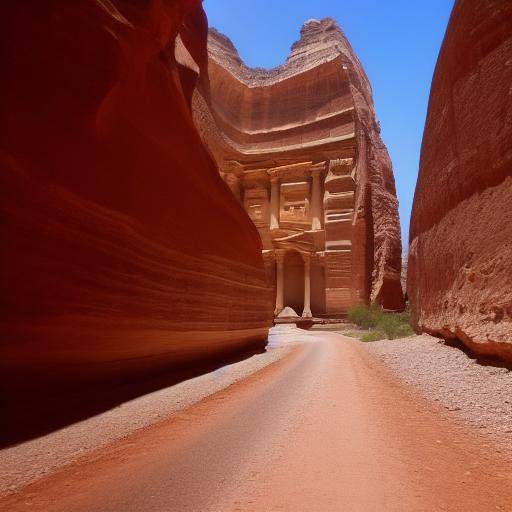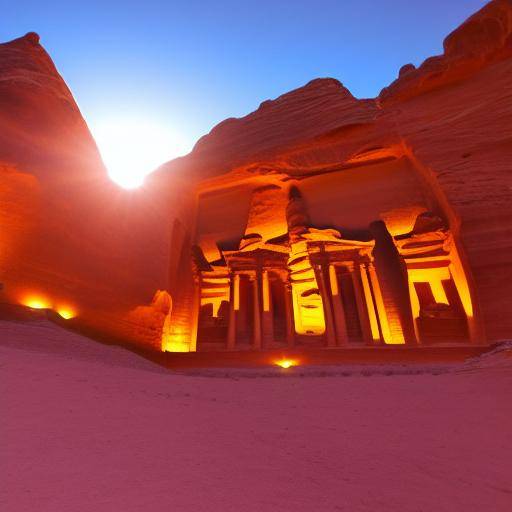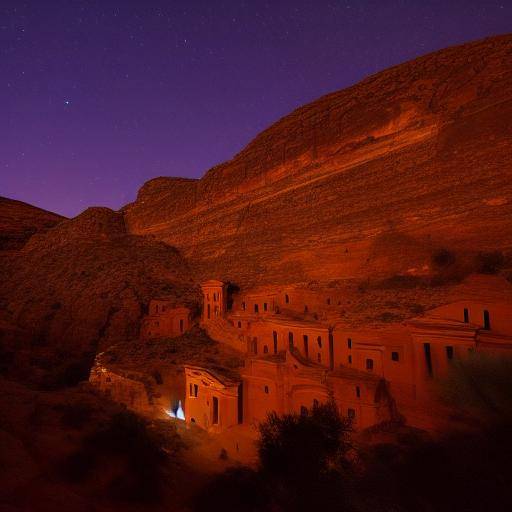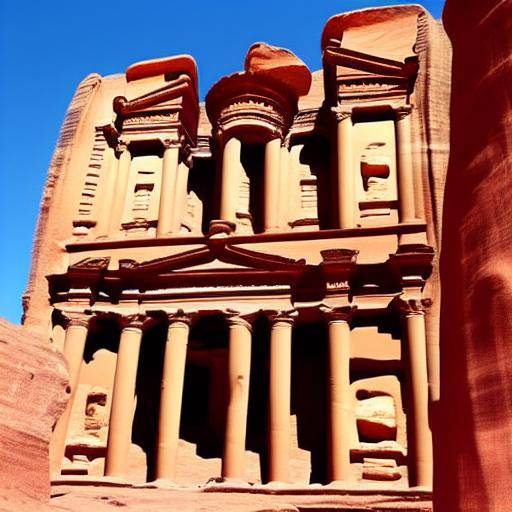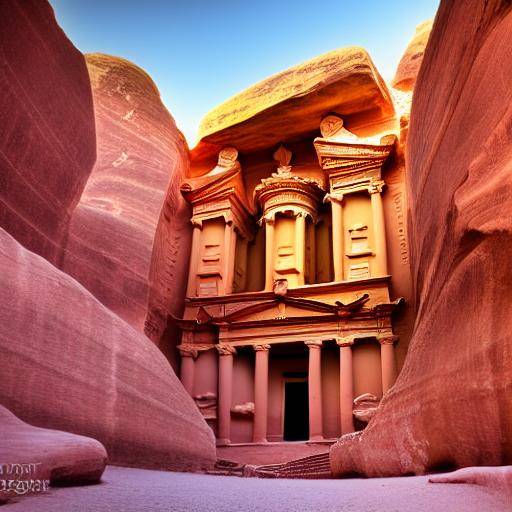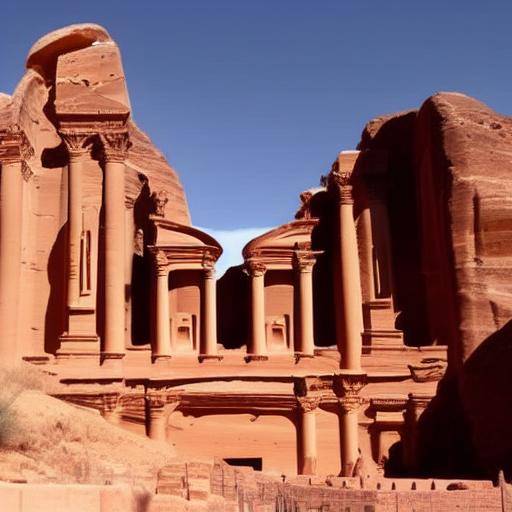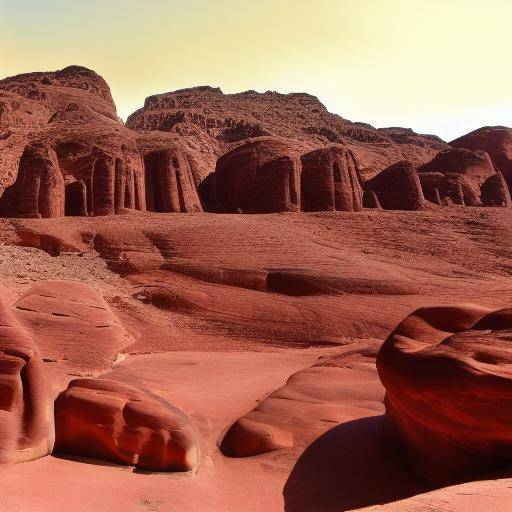
The ancient city of Petra, located in the desert of Jordan, is a place full of geological and historical wonders that continues to fascinate visitors from all over the world. In this article, we will explore the history, geology of the desert and the uniqueness of Petra, as well as its impact on the landscape and culture of Jordan. Join us on this journey to discover everything the geography in Petra has to teach us.
Introduction
A Wonder World
The majestic Petra settlement, carved in the pink rocks of the Jordanian desert, is a true testament to human skill and geological intrigue. Known as the " rose city", Petra is recognized as a UNESCO World Heritage Site and has been described as one of the archaeological wonders of the modern world. However, beyond its amazing cultural heritage, this ancient city offers valuable lessons on geological formation and desert landscapes.
In this article, we will explore how Petra's geography, a place surrounded by the natural splendour of the desert, has shaped its history, influenced its architecture and left its mark on Jordan's culture. From the limestone and sandstone that conforms Petra to the geological secrets hidden in its caves and throats, we will discover how this emblematic place teaches us not only about its past, but also about the mysteries of nature.
History and Background
Petra, baptized as the "lost city", dates from at least 312 B.C. and was the capital of the Nebatian kingdom. Located in a strategic enclave on antiquity trade routes, the city flourished thanks to its control over incense, silk and spice routes connecting Asia, Africa and Europe. The ability of the Nabateans to manipulate and store water allowed the development of a complex society in the middle of the desert, which is reflected in their advanced system of canals and cisterns that are still preserved today.
The monumental structures sculpted in the rocks of Petra, such as the Treasury and the Monastery, highlight the architectural and artistic skills of the Nebatians. Its dominance in the size of the stone surprises visitors until today, thus revealing an intrinsic link between the geology of the region and the development of Petra as a unique metropolis.
Later, Petra fell in decline and, after the arrival of the Romans, the city lost its original importance, almost completely disappearing from Western consciousness to its rediscovery in the nineteenth century. Since then, this archaeological treasure has captivated explorers, archaeologists and tourists alike, showing a unique mix of ancient history and impressive geology.
Analysis in Deep
The Geological Influence
The primary geological formation that forms Petra is the limestone and the sandstone, sculpted over time by the action of wind and water. These rock strata have been carved by erosion, creating extraordinary forms, such as narrow throats and winding cannons. In fact, the iconic Al-Siq, a natural parade of more than 1 km in length, serves as the impressive main access to the city, a geological marvel that leaves all visitors breathless.
The erosion continued by the torrential rains and the floods of the rivers has led to the formation of caves and caves, used by the ancient inhabitants for houses, warehouses and tombs. This fragile balance between geology and human history demonstrates the intricate relationship between the desert landscape and the civilizations that inhabited it.
The Cultural Development
The desert landscape surrounding Petra has influenced the culture and daily life of its inhabitants over the centuries. The geology of the desert, with its rock formations and water scarcity, has been a determining factor in how people have built their homes, stored their resources and forged their identity. The skills acquired to survive in such an inhospitable environment reflect human adaptation to geographical conditions and, in turn, shape Petra's historical narrative.
As a result, the lessons learned from the geography in Petra are not limited to the archaeological past, but offer a deeper understanding of how geology influences everyday life and the evolution of civilizations. From urban planning to natural resource development, Petra's geography highlights the importance of understanding the interaction between human beings and their natural environment.
Comparative analysis
Petra Vs. Geology of the Desert
The uniqueness of Petra lies in its fusion between human inhabitability and geological formation. Compared to other archaeological sites in desert regions, such as the rocky enclaves of Cappadocia or the kashbahs in the Sahara, Petra stands out for its particular focus on the interaction between human architecture and living rock. This differentiated approach highlights how the adaptive application of geography in Petra has resulted in an exceptional cultural heritage.
Jordan: A country rooted in its Geology
Jordan, as a whole, is a testimony of how geology has shaped its rugged, mountainous and deserted landscape. From the vast deserts of Wadi Rum to the canyons of Wadi Mujib, Jordan's geological diversity influences its biodiversity, its natural formations and its unique character as a nation. In particular, the mixture of sedimentary and volcanic rocks in the region gives Jordan an exceptional appeal for lovers of geology and nature.
Tips and Recommended Actions
Responsible exploration
When visiting Petra, it is important to remember that its geological and historical heritage must be respected and preserved. Consciousness about the conservation of the natural and cultural environment is crucial to ensuring that future generations can appreciate the unique beauty of Petra. Opting for eco-friendly excursions, following the directions of local guides and maintaining responsible behaviour are concrete ways to contribute to the sustainability of this geographical treasure.
Conclusions
Ultimately, the exploration of geography in Petra reveals a deep fabric of connections between history, geology and culture. From the ancient skills of the Nabateans to manipulate their environment to the contemporary influence of geology in the daily life of Jordan, Petra serves as a reminder that the earth not only shapes our lives, but also holds countless lessons on our past and our future.
We hope that this geographical tour of Petra has awakened the same fascination for the wonders of nature and history that has inspired travelers and thinkers throughout the centuries. As the world continually advances into the future, let us remember that in the living rock of Petra lies a treasure of knowledge, waiting to be discovered and appreciated by generations to come.
FAQ
Question 1: What is the best time of the year to visit Petra?
Answer: Spring and autumn are usually the most recommended seasons, as the weather is more moderate and allows you to fully enjoy the beauty of Petra without the intense heat of the summer or the cold of the winter.
Question 2: What are the environmental impacts related to visits to Petra?
Answer: Crecientte tourism can generate impacts on the environment, such as erosion of trails or waste generation. It is essential to follow the conservation and respect of the natural and cultural heritage of Petra to minimize these impacts.
Question 3: Can guided tours be made to explore the geology of Petra?
Answer: Yes, there are numerous local agencies that offer guided tours specializing in Petra geology. These visits provide a unique perspective on geological formation and the historical evolution of the region.
Question 4: What is the role of geology in the preservation of Petra?
Answer: The understanding of geology is essential for the long-term conservation of Petra. It helps identify and mitigate natural hazards, such as erosion, and contributes to the planning of preservation measures that safeguard their heritage.
Question 5: Is there any current research effort on Petra's geology?
Answer: Yes, several teams of researchers are conducting geological studies in Petra to better understand their formation and evolution over time, which will contribute to the management and sustainable protection of this archaeological jewel.
Question 6: What outdoor activities are the unique geology of Petra?
Answer: Trekking, hiking and excursions around Petra provide the opportunity to appreciate the unique geology of the region, allowing visitors to contemplate rock formations, canyons and desert landscapes in a more direct way.
External Sources
We hope that this guide has enriched your understanding of the geology in Petra and its influence on the history and culture of Jordan. From the interaction between rock and human life to the importance of conservation, Petra's geography offers a caleidoscope of lessons that transcend time and space. May your exploration of this wonderful place inspire you to appreciate the intimate union between nature and humanity, and to ensure the preservation of the treasures that the earth gives us.

